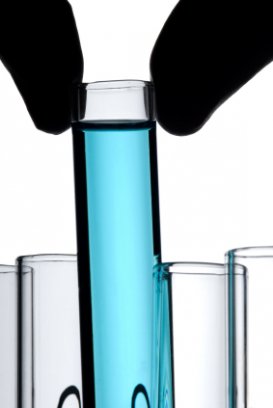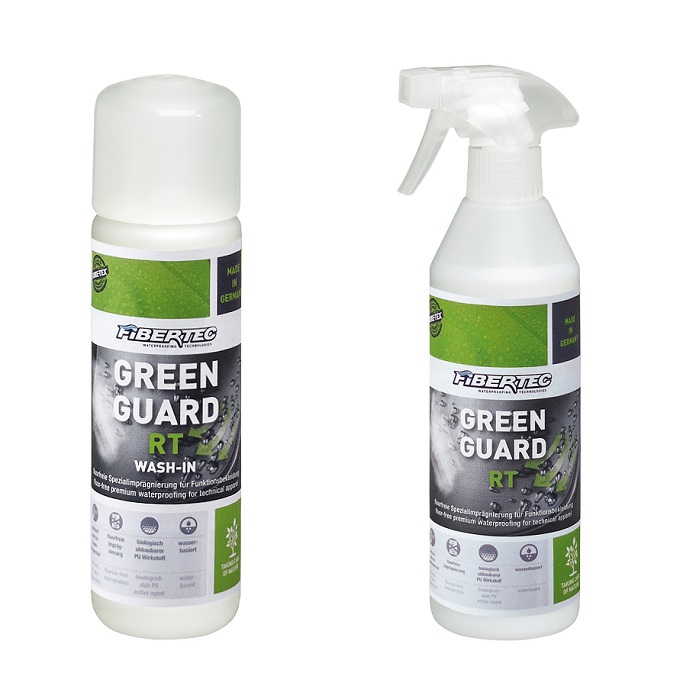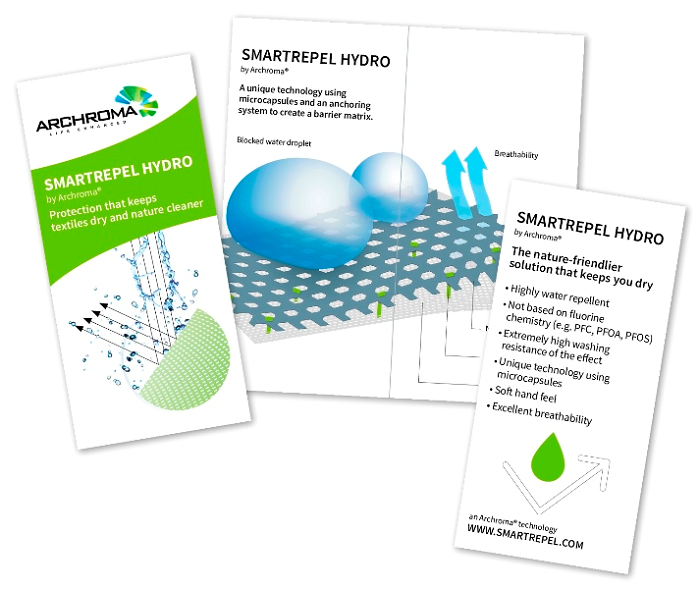
Gore Fabrics division announces environmental goals for 2020
In its latest report, Greenpeace has found that traces of PFCs have left their mark in the most remote and pristine places on earth.

24th September 2015
Innovation in Textiles
|
Manchester
In its latest report, Greenpeace, an independent global campaigning organisation, has found that traces of PFCs have left their mark in the most remote and pristine places on earth and were discovered in snow samples from all sites that the Greenpeace teams visited as part of its eight expeditions to remote mountainous areas on three continents.
After acknowledging that PFCs are routinely present in outdoor clothing and shoes, Greenpeace now wants to raise awareness among outdoor enthusiasts and the wider public with its global study. The institution already published a similar study on PFCs found in outdoor clothing back in 2012, where it stated that the industry is still far from reducing its use of hazardous chemicals to zero and that it is making the consumers unwitting assistants in releasing perfluorinated compounds to the environment.
The study of two years ago provoked a response from some industry brands, including Patagonia, a leading USA-based supplier of rugged technical apparel and accessories for a variety of outdoor pursuits, including mountain climbing, skiing, surfing and fishing. Since the 1980s, Patagonia has become well known for its progressive environmental and social initiatives.
The company has been addressing the issue of using PFCs in its technical products for more than a decade and has made a commitment to rid all of its products of PFOA chemicals by 2015, according to Jen Rapp, a spokeswoman at the company’s California headquarters.

The company has been working on adopting durable water repellency (DWR) technologies that are free of PFOA and are essential to the weatherproof products’ performance and durability, as they are said to enable the clothing to bead water, resist wetting, stay lightweight, dry faster and remain stain resistant. According to the manufacturer, the two obstacles in trying to switch to PFC-free production are finding a good replacement and coordinating with other companies in its supply chain.
PFCs are used in many industrial processes and consumer products. Despite the presence of some natural fluorocarbons such as tetrafluoromethane, found in rocks, man-made fluorocarbons are potent greenhouse gases.
The fluorocarbons PFOA (perfluorooctanoic acid) and PFOS (perfluorooctane sulfonate) have both been subject of numerous investigations by the EU and the US Environmental Protection Agency (EPA), which regards them as being harmful to the environment. The US based LEED for Healthcare Furnishings credit lists PFCs as a chemical to avoid. They have also been singled out by the industry group Zero Discharge of Hazardous Chemicals (ZDHC) as a chemical to be phased out of apparel products by January 2015.

Certain fluorocarbons bioaccumulate, they are extremely stable and can be stored in the bodies of both humans and animals. Examples include PFOA and PFOS, frequently present in water resistant textiles and sprays conferring water resistant properties to textiles.
For some PFCs there is evidence that they cause harm to reproduction, promote growth of cancerous tumours and affect the hormone system. In addition to health concerns for users of treated textiles, some health risks can be higher for workers in textile finishing plants, as well as the communities surrounding the factories. Exposure to perfluorinated chemicals (PFCs) may also reduce the body's immune response to vaccinations, according to the research from Copenhagen University Hospital, Denmark, and Harvard Chan School of Public Health in Boston, US.
Last year, the new test criteria and limit values for Oeko-Tex Standard 100 came into force, which also covered the specifications for perfluorooctanoic acid (PFOA), which have become much stricter. Although, at present legal requirements only exist for the use of perfluorooctane sulfonates (PFOS) with a limit value 1.0 µg/m², the use of perfluorooctanoic acid (PFOA) has also been severely restricted as part of Oeko-Tex Standard 100 certification since 2009. Four other perfluorinated substances (PFCs) have been included in the 2014 edition.

The limit values set by Oeko-Tex are far stricter than those defined for these substances in REACH as substances of very high concern (SVHC). This means that for several years already, manufacturers have been made aware of the fact that they need to restrict the use of these extremely environmentally persistent substances and replace them with alternatives.
“For the sake of objective consumer information, it should also be mentioned in connection with the Greenpeace report that some of the criticised chemicals are in no way limited to a use in textiles, and can also be found in products in everyday use,” said Oeko-Tex in a report following the Greenpeace findings of 2012. “Perfluorinated substances (PFCs), for example, can be found in Teflon coatings for various kitchen utensils or are approved for functional food packaging, where they are subject to far more drastic and sensitive conditions of use than textiles.”
Earlier, in 2013, Sweden based retailer H&M banned the use of perfluorinated compounds in all products it sells. The group decided to replace PFCs in its products with Bionic-Finish Eco, a fluorocarbon-free water-repellent finish produced by Rudolf GmbH, Germany, using a blend of branched comb polymers and dendrimers. In 2011, H&M and other fashion and sport brands initiated Joint Roadmap: Toward Zero Discharge of Hazardous Chemicals, with the goal of eliminating hazardous materials discharge in apparel and footwear supply chains by 2020.

This year, the German company Fibertec, specialising in waterproofing technologies for clothing, equipment, and footwear, developed a new environmentally friendly DWR product for waterproof, breathable clothing, GreenGuard RT. The unique patented PUR active ingredient here is biodegradable and excludes the use of PFCs, but instead uses polyurethane dendrimers. “This innovation has given us an excellent alternative to fluorine-based DWR products,” explained Guido Augustiniak, Fibertec Managing Director.
W.L. Gore & Associates, a technology-driven company, also announced last month its plans to invest more than US 15 million over the next five years to explore alternative DWR solutions. The goal is to deliver new solutions with an improved environmental profile while still providing durable comfort to a high standard. The company recognizes the ongoing debate regarding PFCs. “Gore has taken a leadership role in the outdoor industry regarding the sustainable management of PFCs. We invested significantly and are one of the first to completely eliminate PFOA from our raw materials in the manufacture of the entire range of functional textiles,” commented Bernhard Kiehl, Leader of the Gore Fabrics’ Sustainability Program.

Another brand, Archroma, a leader in specialty chemicals, has also developed a novel technology that is not based on fluorine chemistry, PFC, PFOA, PFOS or solvents, with the launch of the Smartrepel Hydro line for polyester, polyamide and cotton-based textiles. Archroma’s micro-encapsulated technology uses a repelling agent and anchoring agent that together are said to create a perfect symbiosis of water protection, breathability and durability.
Last year, at the OutDoor 2014, a global show for the outdoor industry, various companies exhibited their sustainable solutions, including Toyota Tsusho, a leading supplier of high-tech functional materials for clothing and footwear. The company launched a new generation of high performance membranes for clothing made from its Arnitel VT flexible thermoplastic polyester based elastomer at the exhibition. The new membranes are said to contain no perfluorinated chemicals (PFCs), are 100% recyclable, waterproof and highly breathable.
Besides Toyota Tsusho, many exhibiting brands also featured Schoeller ecorepel finish, which is free from fluorocarbons and is biodegradable according to OECD 302 B (80 to 100%). It is based on long paraffin chains that wrap themselves spiral-like around individual fibres, filaments or yarns in a very fine film. This is said to reduce surface tension so that water droplets and even mud simply run off, Schoeller claims.
Brands like ORTOVOX, Peak Performance and P.A.C presented their products featuring ecorepel, confirming the trend of sustainability prevalent at the event. ORTOVOX introduced innovative mix of materials in the mountain pants segment. Peak Performance presented the new fashionable Black Light Lite Softshell pants and shorts, and P.A.C. also featured ecorepel technology from Schoeller in its H2O multifunctional head band.

Business intelligence for the fibre, textiles and apparel industries: technologies, innovations, markets, investments, trade policy, sourcing, strategy...
Find out more